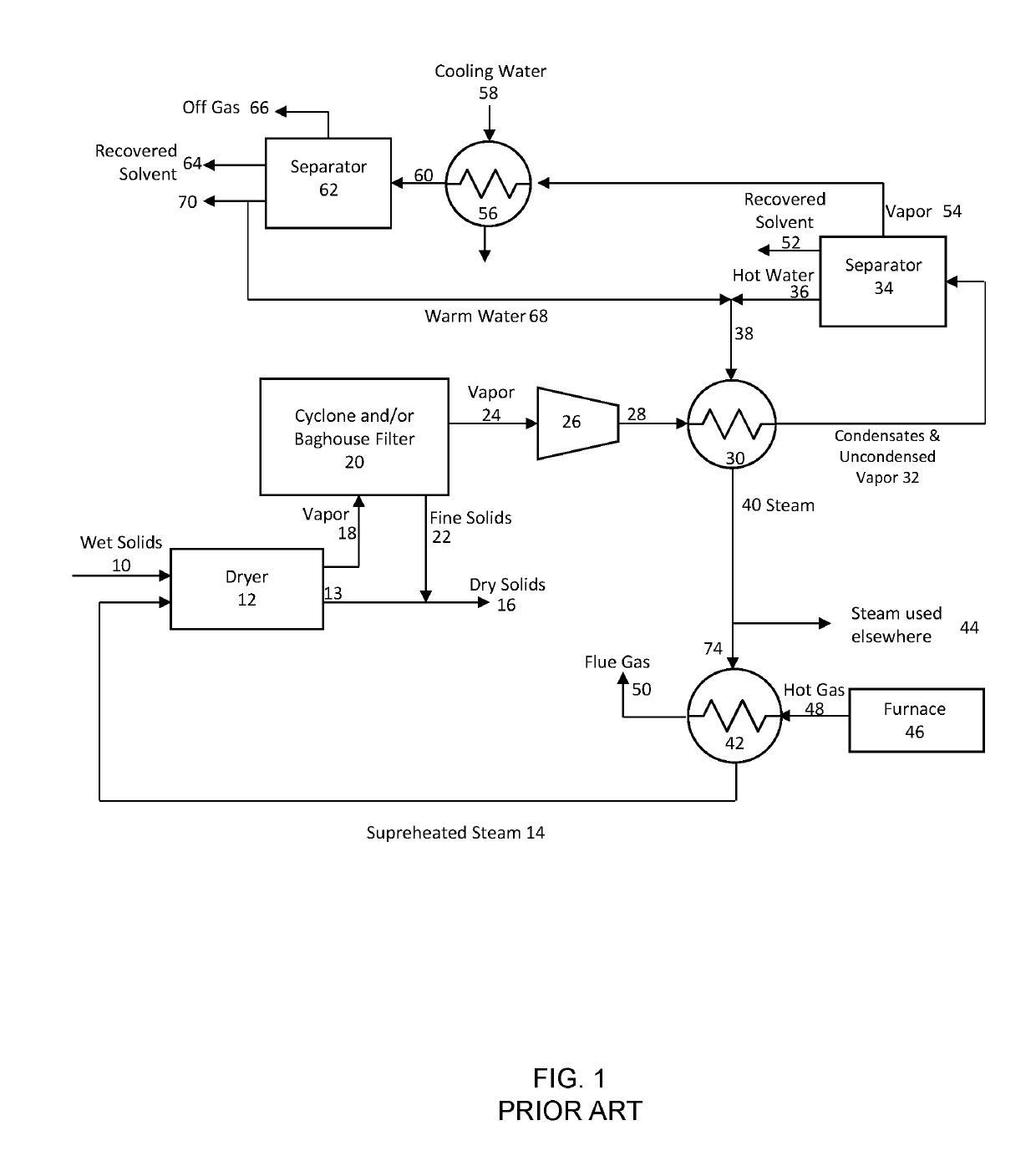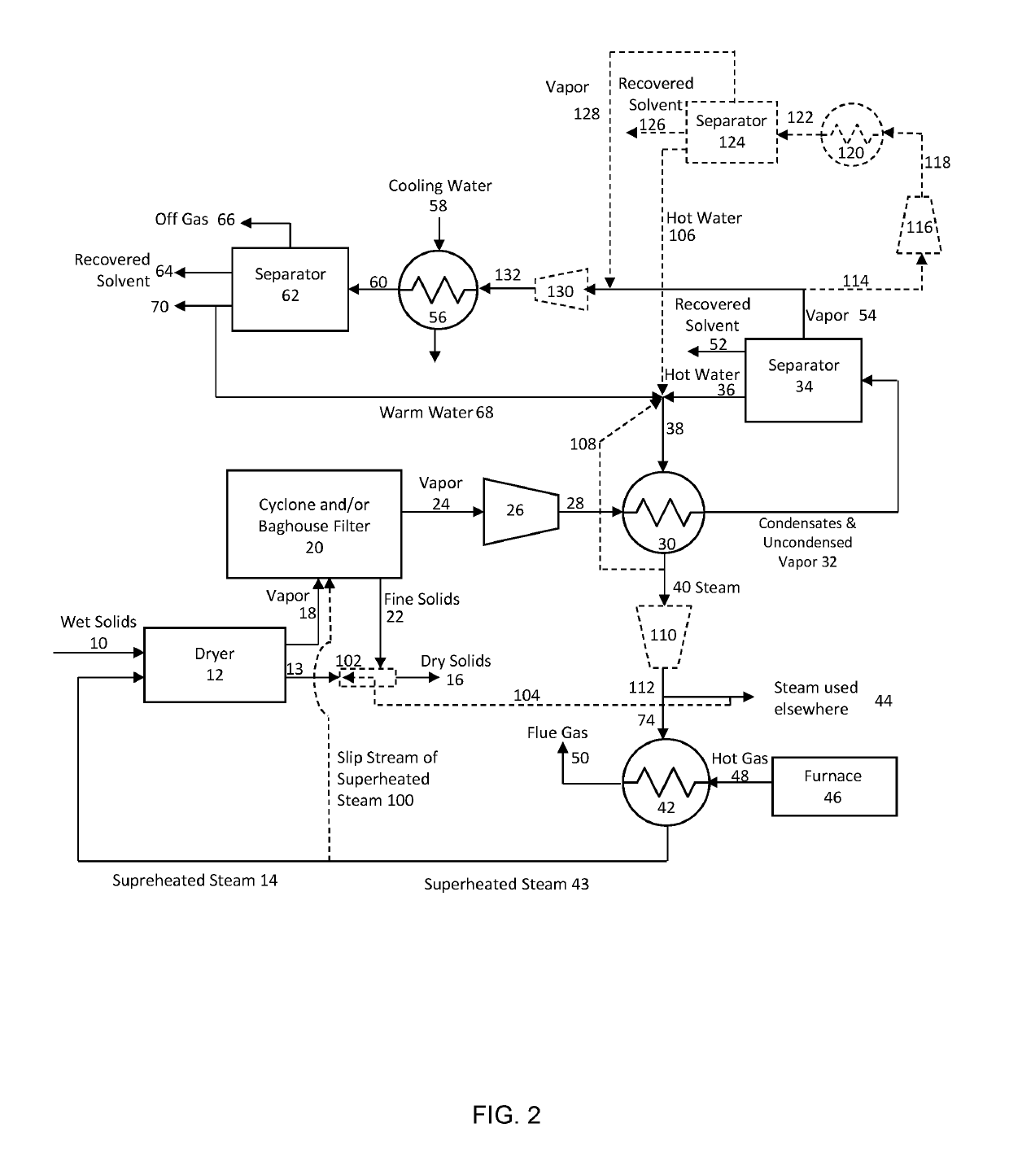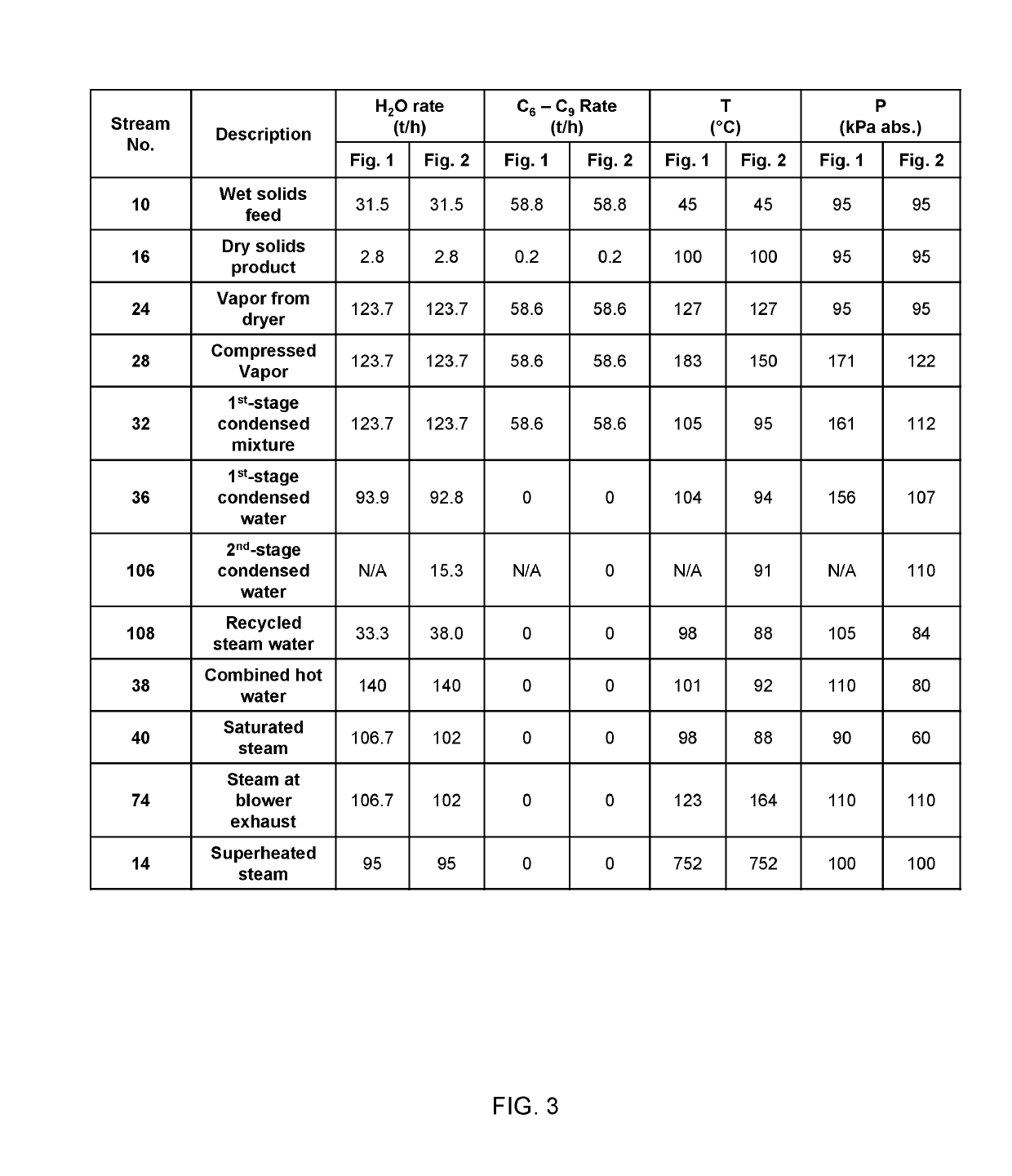Process for separating solvent from spent oil sand solids using superheated steam
a technology of oil sand solids and solvents, which is applied in the direction of drying machines, drying, light and heating equipment, etc., can solve the problems of waste of energy from excess steam production, difficult removal and recovery of solvent trapped in spent oil sand solids, and substantial increase in the temperature of vapor, so as to and reduce the loss of hea
- Summary
- Abstract
- Description
- Claims
- Application Information
AI Technical Summary
Benefits of technology
Problems solved by technology
Method used
Image
Examples
example
[0089]Exemplary embodiments of the present invention are described in the following examples, which are set forth to aid in the understanding of the invention, and should not be construed to limit in any way the scope of the invention as defined in the claims which follow thereafter.
[0090]A modified version of the prior-art process shown in FIG. 1 and the process shown in FIG. 2 were simulated using Aspen HYSYS™ v8.4 2013 (AspenTech, Burlington, Mass.), a chemical process simulation software. The process of FIG. 1 was modified to include a blower 110 (analogous to that shown in FIG. 2) because the blower may practically be needed to compress the steam in conduit 74 upstream of the steam superheater 42 to overcome the pressure loss in steam superheater 42. A feed rate of wet solids 10 of 554 metric tonnes per hour (t / h) at 45° C. was assumed in the simulation. The wet solids 10 contained 5.7 weight % water (31.5 t / h) and 10.6 weight % solvent (58.8 t / h). The solvent was assumed to be...
PUM
| Property | Measurement | Unit |
|---|---|---|
| weight percent | aaaaa | aaaaa |
| weight percent | aaaaa | aaaaa |
| dew point | aaaaa | aaaaa |
Abstract
Description
Claims
Application Information
 Login to View More
Login to View More - R&D
- Intellectual Property
- Life Sciences
- Materials
- Tech Scout
- Unparalleled Data Quality
- Higher Quality Content
- 60% Fewer Hallucinations
Browse by: Latest US Patents, China's latest patents, Technical Efficacy Thesaurus, Application Domain, Technology Topic, Popular Technical Reports.
© 2025 PatSnap. All rights reserved.Legal|Privacy policy|Modern Slavery Act Transparency Statement|Sitemap|About US| Contact US: help@patsnap.com



